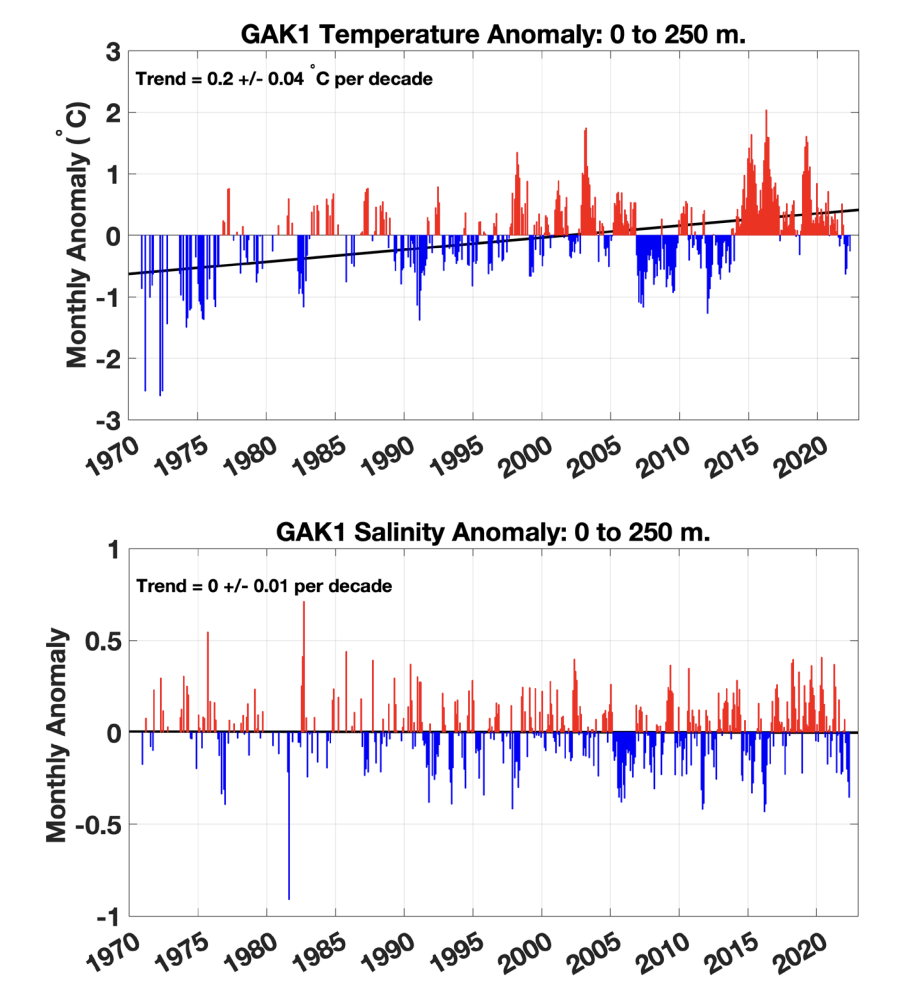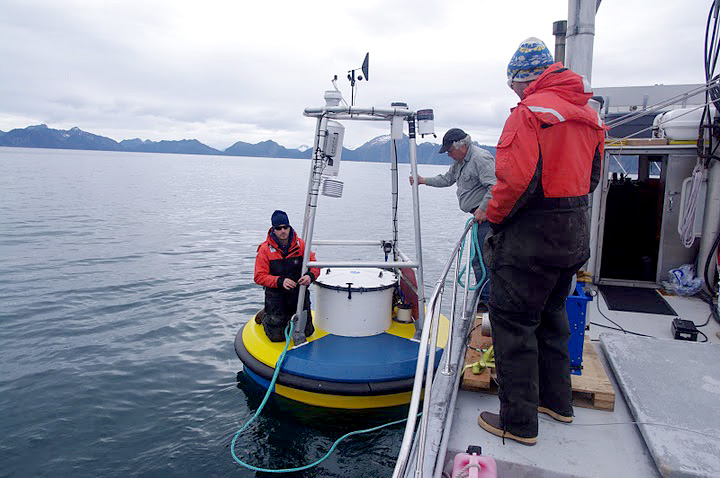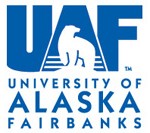Continuously
measures oscillations here
Season. Year. Decade.
Why are we sampling?
Temperature and salinity profiles in relation to depth have been taken at the oceanographic station GAK1 beginning in December, 1970. This multi-decade time series of oceanographic profile data is one of the longest in the North Pacific for any location. Averages of temperature and density (which is related to salinity) at selected depths show the annual cycle of changes in these two important environmental parameters over the long-term and help scientists understand climatic changes and how these translate into changes in oceanographic conditions.
Where are we sampling?
The station is located at the mouth of Resurrection Bay in the Gulf of Alaska and is the station closest to shore of the Seward Line ecological survey monitoring transect. The site is at 59° 50.7’ N, 149°28.0’W and is located within the Alaska Coastal Current, so the waters it monitors are well “connected” with water shelf circulating over the continental shelf in the Gulf of Alaska.

DEPLOYMENT OF THE CTD INSTRUMENT TO COLLECT SALINITY AND TEMPERATURE DATA CONTINUOUSLY ALONG ITS VERTICAL DESCENT TO THE OCEAN FLOOR, 263 M BELOW THE VESSEL.
How are we sampling?
For the first 20 years that sampling at the GAK1 station occurred, it was accomplished by “ships of opportunity,” comprised primarily of research vessels as they left or entered the port. The frequency of sampling thus varied from several times per month to several times per year. Since September 1990, the sampling has been accomplished on a nominally monthly basis from locally-operated vessels. Today, the primary survey vessel is the 40’ R/V Nanuq, from which a single CTD (conductivity, temperature, depth) cast profiles the water column from the surface to within 10 meters of the ocean bottom. The CTD cast also collects water samples for analysis of nutrients and phytoplankton. A net towed through the upper 100 m of the water column collects zooplankton.
What are we finding?
Data from the 2021-2022 GAK1 mooring is shown below. In the record-length anomaly timeseries for GAK1, the data show that the surface waters warm faster than waters near the seafloor. In addition, the surface is freshening and the waters near the seafloor have an opposite trend, but the latter is just barely significantly different from zero at the 95% confidence level. These trends show that the water column is progressively stratifying over time, a result that carries potentially important ramifications for the productivity of the Gulf of Alaska ecosystem. With only a brief period of waters cooler than average, positive temperature anomalies that began during the marine heatwave starting winter 2013/2014 in the Gulf of Alaska persisted into 2019 throughout the GAK1 water column at GAK1 before returning to usual temperatures in recent years.

Data records from the 2021-2022 deployment of the GAK-1 mooring, with temperature (top), salinity (middle) and density (bottom). Colors denote different instrument depths, with the 2023 sensors winding up near 18 m (cyan), 24 m (blue), 56 m (red), 99 m (green), 147 m (black),200 m (magenta) and 247 m (gray).
The study’s findings indicate that near-seafloor temperatures are inversely correlated with surface temperatures at GAK-1. This suggests that the magnitude of on-shelf renewal of deep shelf waters is linked to surface conditions, which partially regulate thermal conditions in coastal waters. With the known temperature-salinity relation at these depths near the shelf break, it can be expected that on-shelf nutrient fluxes are similarly enhanced during periods of cooler surface waters in the coastal region.

Full water column (0-250m depth) anomalies of temperature (top) and salinity (bottom) extending over 1970 to 2022. Dataset depicts the full combined mooring (1999 to present) and CTD profile (1970 to present) synthetic dataset. Note the presence of a statistically significant warming trend in temperature, while the integrated water column salinity record has no discernable trend.
The GAK-1 dataset is a crucial reference spanning half a century for assessing environmental conditions and changes in the Gulf of Alaska (GOA). Its value has been steadily increasing over time and has been utilized in a growing number of peer-reviewed publications, student theses and dissertations, and agency reports. This dataset plays a key role in understanding the region’s dynamics.






